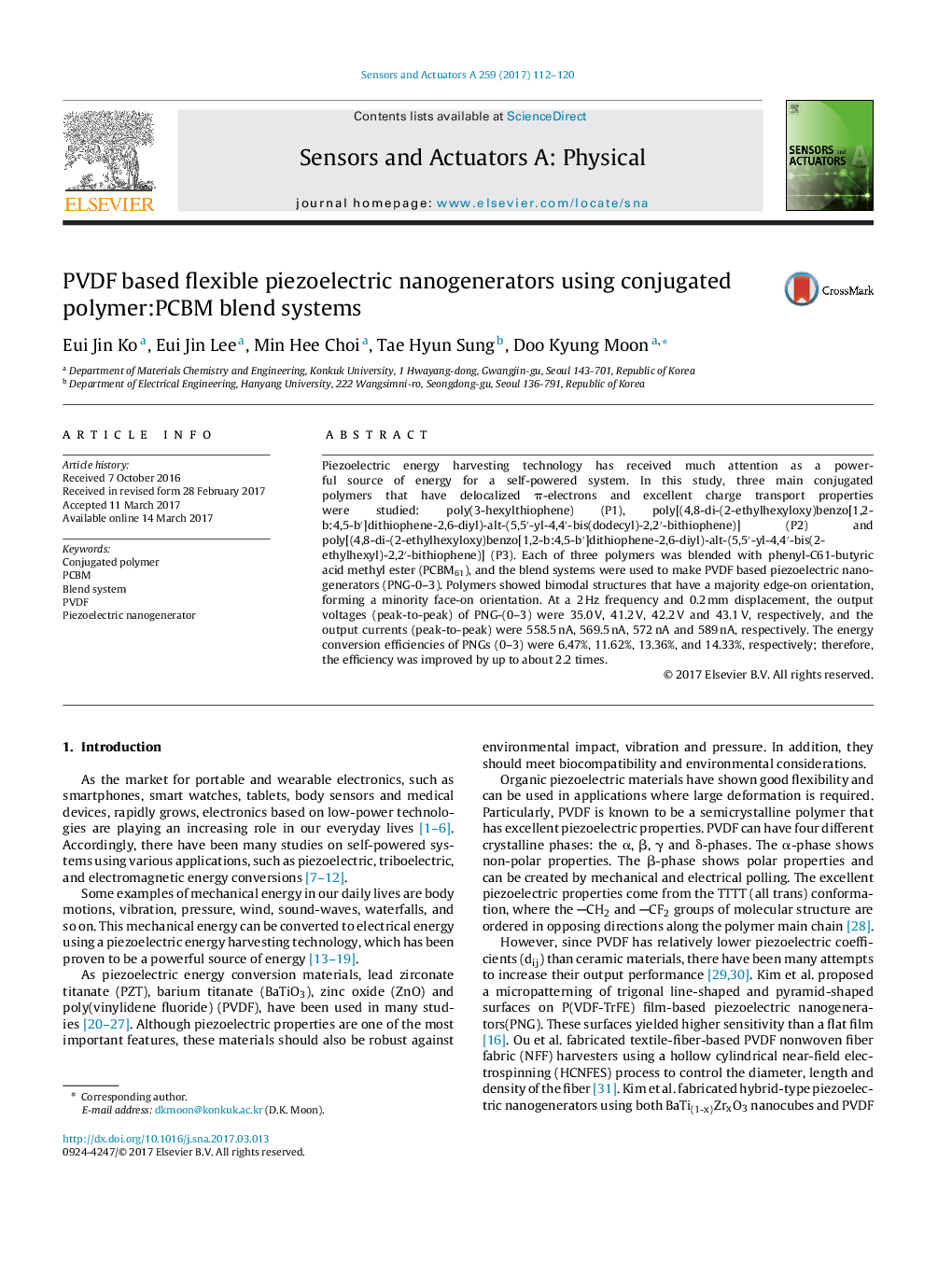| Article ID | Journal | Published Year | Pages | File Type |
|---|---|---|---|---|
| 5008356 | Sensors and Actuators A: Physical | 2017 | 9 Pages |
Abstract
Piezoelectric energy harvesting technology has received much attention as a powerful source of energy for a self-powered system. In this study, three main conjugated polymers that have delocalized Ï-electrons and excellent charge transport properties were studied: poly(3-hexylthiophene) (P1), poly[(4,8-di-(2-ethylhexyloxy)benzo[1,2-b:4,5-bâ²]dithiophene-2,6-diyl)-alt-(5,5â²-yl-4,4â²-bis(dodecyl)-2,2â²-bithiophene)] (P2) and poly[(4,8-di-(2-ethylhexyloxy)benzo[1,2-b:4,5-bâ²]dithiophene-2,6-diyl)-alt-(5,5â²-yl-4,4â²-bis(2-ethylhexyl)-2,2â²-bithiophene)] (P3). Each of three polymers was blended with phenyl-C61-butyric acid methyl ester (PCBM61), and the blend systems were used to make PVDF based piezoelectric nanogenerators (PNG-0-3). Polymers showed bimodal structures that have a majority edge-on orientation, forming a minority face-on orientation. At a 2Â Hz frequency and 0.2Â mm displacement, the output voltages (peak-to-peak) of PNG-(0-3) were 35.0Â V, 41.2Â V, 42.2Â V and 43.1Â V, respectively, and the output currents (peak-to-peak) were 558.5Â nA, 569.5Â nA, 572Â nA and 589Â nA, respectively. The energy conversion efficiencies of PNGs (0-3) were 6.47%, 11.62%, 13.36%, and 14.33%, respectively; therefore, the efficiency was improved by up to about 2.2 times.
Related Topics
Physical Sciences and Engineering
Chemistry
Electrochemistry
Authors
Eui Jin Ko, Eui Jin Lee, Min Hee Choi, Tae Hyun Sung, Doo Kyung Moon,
